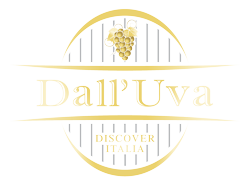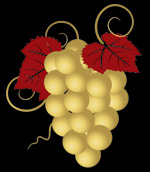Wine Selections for this Private Tasting
Piedmont – Franciacorta Dossagio Zero NV – Andrea Arici |
||||||||||
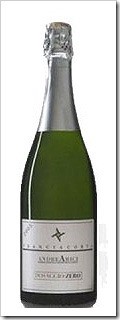 |
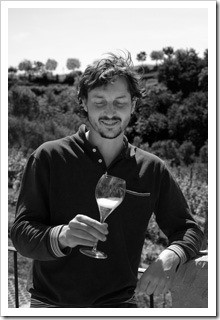 |
$36At the end of the 1990s, then twenty year old Andrea Arici decides to recover some old terraced vineyards owned by the family and left to the wild for years. With the kind help of his father Francis, Andrea systematically refurbished the vineyard and brought it back into production. The wines are an expression of that land, composed mainly of active lime that is fast draining and capable of providing deep minerality and flavor to the wines. Andrea is the only winemaker who produces exclusively Franciacorta ‘not measured’ (Zero Dosage) capable of expressing the characteristics of that land, worked by him daily and with enthusiasm, with full respect of the vibrant natural environment alive and flourishing around the vineyards.
|
||||||||
Sicily – Pietranera 2013 – Marco de Bartoli |
||||||||||
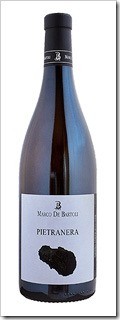 |
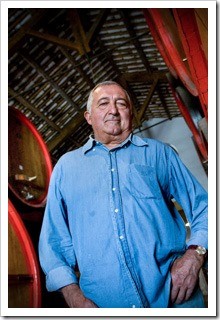 |
$41In 1989, after extended success making fine wines in Marsala, Marco de Bartoli decides to start the production of a new wine in the tiny, wind-swept island of Pantelleria, located half-way between Italy and Tunisia in the Mediterranean sea. In keeping with Siciliano tradition, Marco selects the native Zibibbo grapes (a relative of Moscato) and plants them in the northern and more shaded areas of the island, which is much more suitable to the production of white wines and able to confer a higher acidity and lower sugar to the grapes. It is in a 7 acre vineyard in the Cufurà district where Pietranera is born, a dry white wine with an intense aromatic complexity, genuinely one of a kind.
|
||||||||
Tuscany – Fontarca 2011 – Tenimenti d’Alessandro |
||||||||||
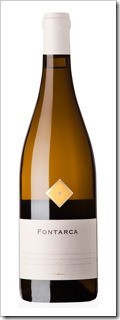 |
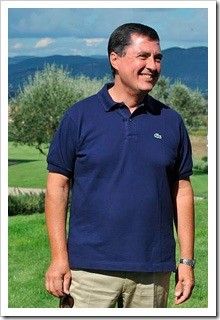 |
$44With vineyard roots dating back to 1967, Tenimenti Luigi d’Alessandro was born as an experiment in planting Rhone River Valley varietals “under the Tuscan sun” near Cortona in Tuscany. Until then, the local Cortona wines were mostly made of Sangiovese and Trebbiano – both noble native grapes, but Massimo d’Alessandro felt that the particular soil, elevation and climate of the Chiana Valley could do wonderful things with Syrah and Viognier. He was right. Building on the grand success of Cortona Syrah and curious about what the local terroir could do with white Rhone varietals, Massimo experimented with Viognier grapes to produce a 100% in purezza Viognier wine from the rocky soils of the Cortona foothills. Pino Calabresi has recently taken the lead at Tenimenti d’Alessandro as winemaker, carrying on the traditions that Massimo established while adding a unique touch to the wines. Pino’s Fontarca 2011 vintage shines with the characteristic floral notes of lavender with peach. Acidity levels are good, giving the wine a balance and brightness that is unique for Viognier wines.
|
||||||||
Tuscany – Petresco 2009 – Le Cinciole |
||||||||||
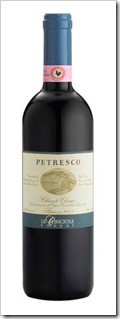 |
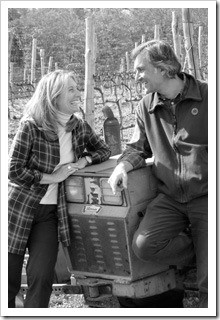 |
$49The Le Cinciole Estate has 30 hectares of vines at an altitude between 400 and 450 meters, and it is located in Panzano in Chianti right in the heart of the Chianti Classico area. The estate is personally run by its vintners-owners Valeria and Luca Orsini. The passionate pursuit of the farm has always been the search for quality that respects traditions and territory. What characterizes Le Cinciole in particular is their choice of using only Sangiovese grapes to produce Chianti Classico, with a moderate use of wood to respect the nature of the grape. The goal is to exalt the characteristics of Sangiovese while conserving as much as possible the primary fragrances and pleasant nature of a young wine.
|
||||||||
Tuscany – Brunello di Montalcino 2009 – La Serena |
||||||||||
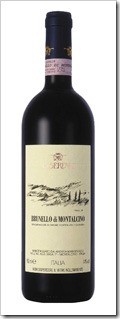 |
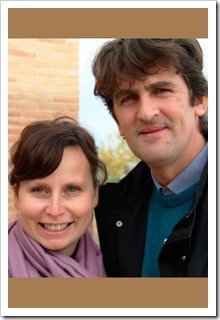 |
$53The youngest sons of the Mantengoli family, Andrea and Marcello, always had a passion for the Brunello wines of Montalcino. In 1988, starting with just 2 acres of land, they started production of a classico Brunello using exclusively Sangiovese grapes from the Estate. Using only organic methods that respect both Brunello history and the beautiful land that their vineyards rest upon, Andrea and family achieved some extraordinary recognition as promising winemakers. Their early success has earned them respect and a rather cult following of Brunello lovers over the years. Today Andrea has 22 acres under vine, and while production has increased, total production is limited to just 11,000 bottles (900 cases). This has contributed to a sense of scarcity of their finest vintages.
|
||||||||
Tuscany – Testamatta 2011 – Bibi Graetz |
||||||||||
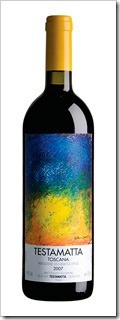 |
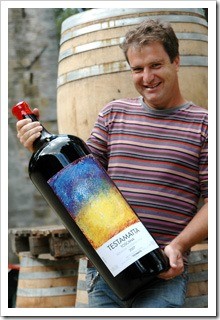 |
$129Bibi Graetz, a respected artist born of Italian and Norwegian parents, started Testmatta (meaning “hot head” in Italian) in the late 90’s just outside of Florence in the renaissance town of Fiesole. At the time his family was faced with losing the lease contracts on some untended old Sangiovese vines that surround his home at the Castello de Vincigliata, or to take the time to recover the vineyard and produce wines. Naturally Bibi saw an artistic opportunity, and chose to begin production with his first vintage in 2000. Bibi is known for his artwork throughout Europe, and each label is adorned with his personal work. Testamatta Toscana is his Super Tuscan offering, though breaking a bit with new tradition for Super Tuscans, this wine is 100% Sangiovese. Bibi wanted to see what could be done with Sangiovese with judicious use of new French oak, and the result is the creation of a cult classic. Bibi’s Testamatta Toscana IGT will lay down for quite some time.
|
||||||||
Tuscany – Bolgheri Superiore 2011 – Castello di Bolgheri |
||||||||||
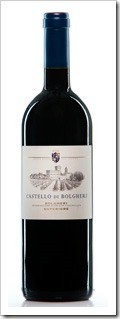 |
 |
$62The origins of Bolgheri Castle date back to 1500, and has been the property of the Counts of Gherardesca family for some 30 generations now. The Castle was ‘remodeled’ a bit in the second half of the 1700s, with a few improvements to the façade again in 1895, but the castle and Estate has largely remained the same for over 500 years. Countess Franca Spalletti Trivelli owns the Estate now, inherited in 1984, and husband Clemente Zileri dal Verme with son Federico lovingly tend the vines and manage the production of their Bolgheri Super Tuscan wines. Castello di Bolgheri is a selection from the best vineyards around the Castle. The grapes undergo a very delicate treatment of pumping over and delestage, and remain in contact with the skins for a long period of time. The result is a more full bodied Bolgheri wine with interesting tannic structure, and one that can be cellared for an extended time.
|
||||||||
Piedmont – Barolo Cerretta 2010 – Ettore Germano |
||||||||||
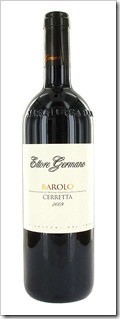 |
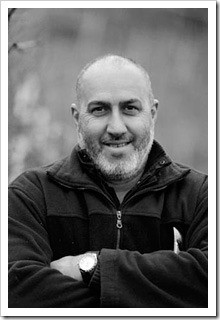 |
$63The village of Serralunga is on the south-east edge of the Barolo appellation. A medieval fortified tower dominates the village, giving fair warning of the character of these wines: structured, substantial, uncompromising. The Germano winery is a few hundred yards north of Serralunga. Sergio Germano is typical of the new generation of producers in the Langhe; after completing six years of study at the school of Enology in Alba he made wine for a few years at Fontanafredda, one of the largest wineries in the area, before returning to the family winery in 1993. Great wine is always made in the vineyard. Sergio does much of the fieldwork himself, with the help of his wife Elena and one worker. Cerretta is one of his two ‘crus,’ with vineyards placed on steep slopes and perfectly exposed to the south.
|
||||||||
Veneto – Amarone della Valpolicella Classico 2007 – Tommaso Bussola |
||||||||||
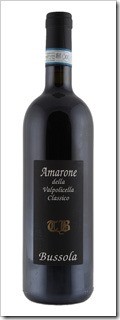 |
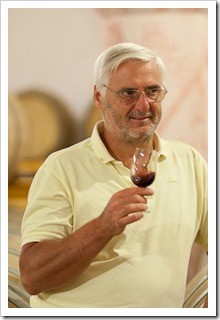 |
$124Tommaso Bussola started his now famous winery in 1977 with the help of his Uncle, all with modest goals of producing a fine Amarone respecting local traditions. While the goals were modest, Tommaso is known as having an inexhaustible energy and passion for winemaking. After producing wines using the most classic Amarone traditions, Tommaso became curious in the early 90’s about what could be done with French barrique. The result is today’s prized Amarone della Valpolicella, a dense and powerful wine that expresses so much of what the Negrar terroir can do. While the age of his vines contributes to the quality of the wines, what may actually contribute more is the fact that he uses naturally low-yielding ancient clones: Corvinone, Corvina Grossa and Rondinella. Corvinone, in particular, is quite rare today because of its low yields and finicky growing habits. Yet, Tommaso claims it is the Corvinone that gives his wines their depth. He calls it the “Super Corvina,” saying that it produces stronger, denser, richer, more perfumed wines.
|
||||||||
Umbria – Sollucchero NV – Monte Valentino |
||||||||||
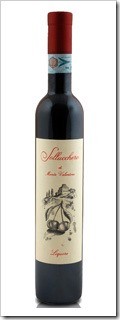 |
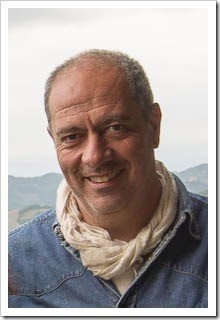 |
$43Visciole cherries are unlike anything we Americans are used to. Not quite a pie cherry, and certainly not like the sweet cherries we eat by the fistful in the late spring, Visciole cherries are quite small and exceptionally tart. The Visciola cherry tree grows wild and its cultivation was a favorite of the Italian contadini, or rural peasant farmers of the past. Fabrizia and Nicola have taken the wonderful wild, spicy Visciole to a new level with their exquisite Sollucchero. Fabrizia and Nicola hand collect the Visciole cherries at their peak of sugar production, which is in early July when the cherry skins just start to wrinkle. The bitter cherries are macerated and then blended with a base of red Rosso Orvietano wine the same day to ensure the rich, spicy essence of the visciole cherry. The wine rests with the cherries for 3 months, then they are filtered away and the result is a cherry-infused, red dessert wine that is a little sweet and very rich.
|
||||||||
